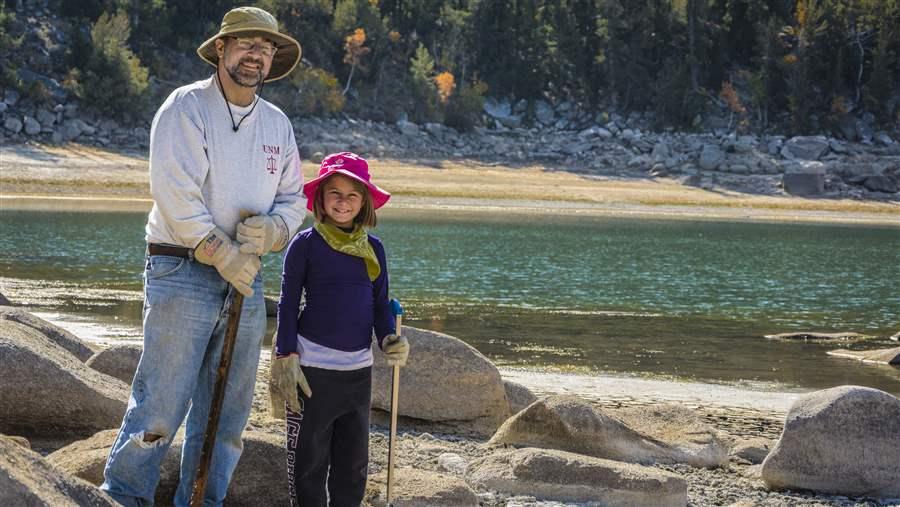Rolling Up Our Sleeves on Earth Day
 © Richie Bednarski
© Richie BednarskiWork project in Nevada's Pine Forest Range.
Since the first Earth Day was celebrated in 1970, people have gathered each April 22 to express their concerns about the environment: dirty air, polluted water, despoilment of parks and preserves, and energy sources that harm the climate. True to the times, the first several observances in the United States often resembled political rallies, complete with placards and slogans. Today Earth Day has become a call to get involved, roll up sleeves, and undertake a project that betters this place we call home—a day celebrated by participation.
The idea of stewardship has taken hold across the country, with people taking their support for nearby natural areas to the next level. For them, Earth Day has grown from a one-day-a-year volunteer activity to a year-round avocation. We who care deeply about public lands are fortunate that stewardship of our wild areas has become increasingly popular.
Many conservation groups around the country work to restore and preserve wilderness so that future generations will have the opportunity to experience these places. For example, Friends of Nevada Wilderness enlists the help of volunteers to repair desert tortoise habitat in Gold Butte, an area managed by the Bureau of Land Management that does not yet enjoy protective designation. LUSH cosmetics has partnered with the Nevada group to organize workdays when the company’s customers and employees plant native flora, such as prickly pear cactus and Mormon tea, in places where improper off-road vehicle use has damaged the land.
The Oregon Natural Desert Association engages hundreds of volunteers each year to improve fish and wildlife habitat through its Wilderness Stewardship Program. According to the association’s website, these individuals have “planted thousands of trees, restored dozens of miles of streams, decommissioned old roads and removed enough barbed wire to stretch from one end of Oregon to the other.” The benefit to the landscape is clear—these places are being returned to their natural state. Equally important, this hands-on activity is creating a generation of conservation advocates who will be more likely to pick up a shovel in future service of some wild place in need.
Those inspired to step up their volunteering should consider contacting the Society for Wilderness Stewardship, which is dedicated to advancing professional wilderness protection. Also, check out this list of celebratory opportunities across the country: http://www.earthday.org/greencities/events.
Enjoy Earth Day and its many opportunities to work together on behalf of the places we love—to pick up a shovel, get mud on our boots, and share the day with kindred spirits who care about how we leave these places for our children. We’re making a tangible difference in our communities, and for generations to come. Thanks to the many outdoor organizations across the country that make it their mission to look after wild places.











